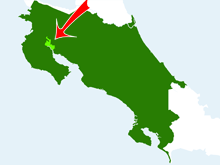Palo Verde National Park - Costa Rica
Palo Verde National Park is a paradise for bird watchers. The Rio Tempisque attracts a large number of aquatic birds. Especially the time between September and March is good to observe migratory birds that migrate from the North.
Isla de Pajaros is home to large numbers of birds: storks, herons, jaribus storks (among the largest aquatic birds of the world) and many more. But not only birds, Boa constrictors are common as well.
It's possible to watch the wildlife from the shore. To really get close to the animals a boat trip with a kayak is the best option.
There are over 200 species of trees in Palo Verde National Park, including the Palo Verde Tree, the Huevos del Caballos Tree and the Lignum Vitae Tree.
The first one is the eponym of this national park. Translated to English its name would be "Green Trunk Tree". The Huevos del Caballos Tree has fruits that supposedly look like the testicles of horses. That's why it's called "Horse Testicle Tree". The wood of the Lignum Vitae Tree is the heaviest would in the world, it sinks in water. "Lignum vitae" is Latin for "tree of life", the wood of the tree was once used to treat syphilis.
For hiking there are several trails in the park. Iguanas, alligators, howler monkeys, capuchin monkey, coatis, coyotes and many bird- and butterfly species have their habitat in this area of Costa Rica.
Birding by kayak...
In the rainy season it is common that the banks Rio Tempisque are flooded. Than several of the trail are inundated and not passable. In those cases the only option to observe the beauty of the park is by boat on the waterway.
Palo Verde National Park on the map

Facts about Palo Verde National Park, Costa Rica
- The Palo Verde National Park got his name from the Palo Verde tree.
- The Palo Verde National Park was established in 1980.

